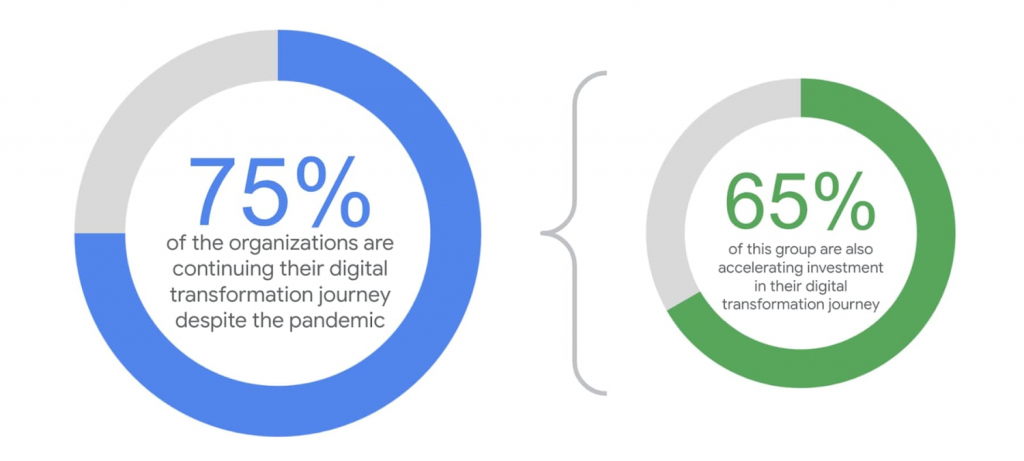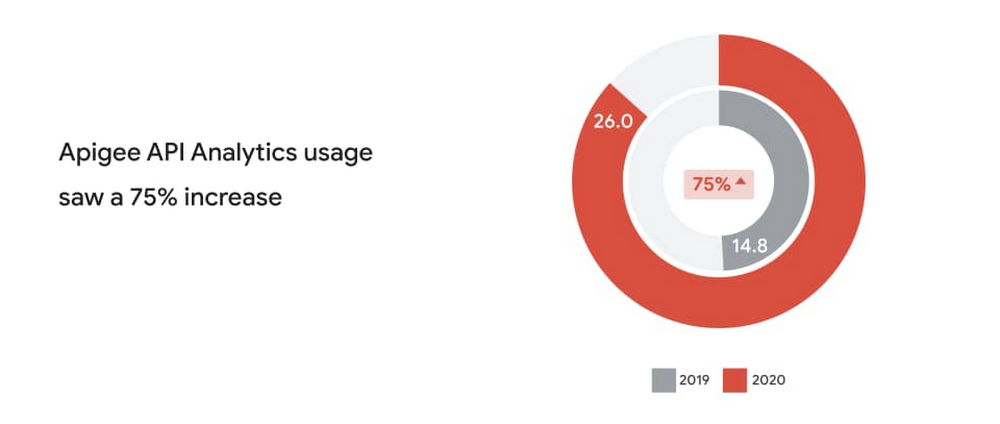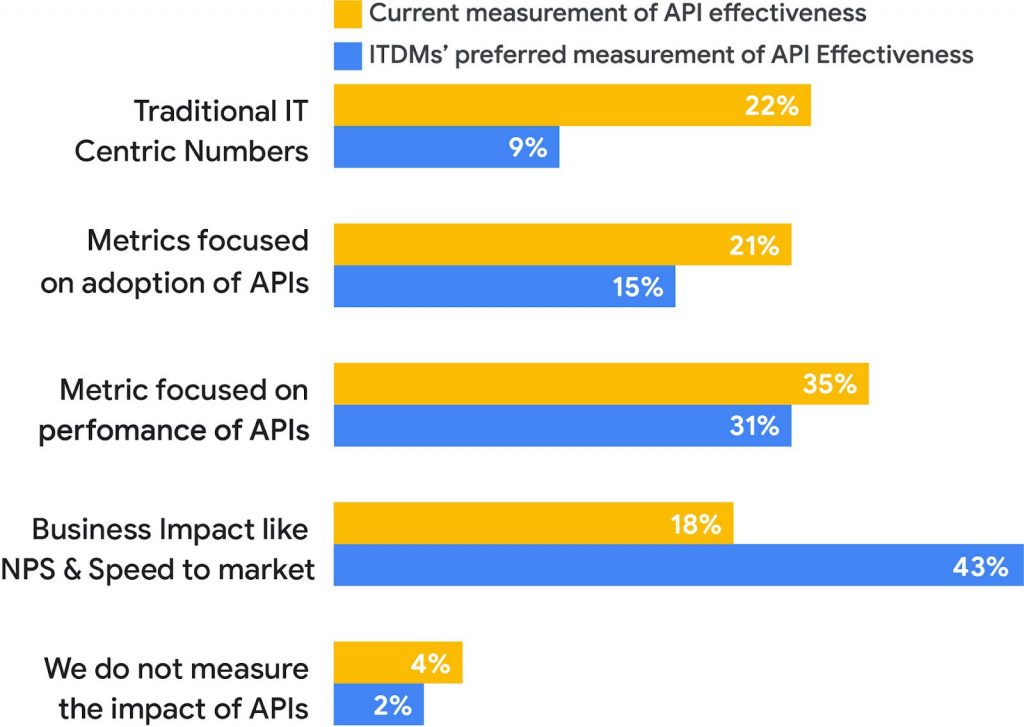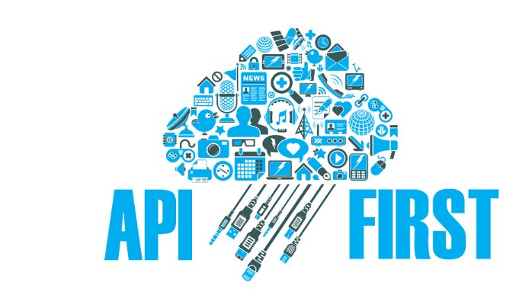Google Cloud liên tục đổi mới và đầu tư đáng kể vào khả năng ngăn…
How top businesses use API analytics to make effective decisions
Report "Situation of the API economy in 2021” of Google pointed out that despite the many financial pressures and disruptions caused by COVID-19, the 75% company continues to focus on their digital transformation initiatives, and nearly two-thirds of them are real. the increased investment and effort.

Because APIs are how software talks to software and how developers leverage data and functionality in different systems, they are at the heart of digital transformation initiatives. As organizations around the world change the way they do business, IT organizations have been trying to meet the demand for new applications — and do more with APIs.
The use of API analytics is growing explosively
Leading businesses use API analytics to not only inform new strategies, but also align leadership goals and outcomes. Since executive sponsors tend to support initiatives that produce tangible results, teams can use API metrics to unify leaders around digital strategies and justifications. for the continued foundation-level funding of the API program. This need is responsible for the increased use of API analytics.
Among Apigee customers, API analytics adoption grew by 75% between 2019 and 2020 — growth that reflects the broader need for organizations to comprehensively assess their digital transformation impacts Digital and business of API programs.

API analysis points to opportunity
To stay competitive in today's hyper-connected world, one key question needs to be answered: “How do we drive impact with our digital initiatives while also ensuring that we're using our limited resources to the best of our ability?"
The API Analytics Tool assists API service providers in this effort by helping them identify which digital assets are the key drivers of business value and to create a strategic view of the assets. digital interaction. By tracking which APIs are being used by certain developer communities, which APIs are powering the most popular applications, and how the APIs are performing, organizations can understand resources which digital assets need optimization or iteration, which digital assets are being leveraged for new uses or new communities, which digital assets are driving revenue, etc. In addition to helping businesses Businesses answer questions they've asked before, API analytics reveal patterns that might not be expected — and help both IT and business leaders refine the KPIs they use analytics to generate out. For example, if an API becomes popular with developers in an industry that will have a new focus, it might convince a business to focus on KPIs such as adoption among these particular developers, rather than overall application.
Best practices for defining effective API metrics
When our survey respondents were asked how currently measure API usage at their company, the top responses included API performance-focused metrics (35%) , in terms of numbers focusing on traditional IT (22%) and API consumption (21%). But when asked about API measurement preferences, business impact tops the list (43%). Data shows that API performance metrics vary by geographic region and industry, with business impact or API performance metrics acting as a directional north star for the business .

Establishing a framework to connect digital investment directly to key performance indicators and metrics (KPIs) is one of the most important areas of strategic alignment to ensure a successful strategy. successful API strategy. Successful programs clearly identify and measure a combination of business metrics, such as direct or indirect revenue, and API consumption metrics, such as API traffic, numbers number of apps built on certain APIs and number of active developers taking advantage of APIs.
Good KPIs are the cornerstone of an effective API analytics effort, but they can be difficult to define. Here are some effective KPIs to help position a successful API program.
Operational KPIs
Average and maximum call delay: P1 latency, or time elapsed, is an important metric that affects customer experience. Breaking this KPI down into granular metrics (e.g. network connection times, server processes, and upload and download speeds) can help provide additional insights to measure your performance. APIs – and therefore of the applications that rely on them.
Total pass rate and error rate: Measuring the success rate of API calls that trigger a status code other than 200 can help organizations track API failure or vulnerability. To track total pass and error rates, it's important to understand what types of errors occur during API usage.
API SLA: Despite being one of the most basic metrics, API Service Level Agreement (SLA) is the gold standard for measuring service availability. Many enterprise SLAs leave software vendors with no room for error. Providing this level of service means that the vendor's upstream APIs need to be running – and that requires API monitoring and analysis to maintain performance and quickly fix any issues.
Acceptable KPIs
Developers: This goal is usually to improve API adoption. Businesses should consider using this metric in conjunction with other metrics that validate the business utility of certain APIs.
Introduce: The portal that app developers use to access APIs should ideally have an automated approval process, including self-service integration that allows users to register their apps, obtain keys, dashboard access, API exploration, etc. The ease and speed with which developers can navigate this process can have a significant impact on the adoption of an enterprise API program. Just as consumers are unlikely to accept a service if there are too many inconsistencies, developers are less likely to adopt APIs that cannot be easily and securely accessed.
API Traffic: This goal can help API programs grow a strong DevOps culture by continuously monitoring, improving, and driving value through APIs. Businesses should consider combining this goal with relevant up and down value chain metrics, including terminal reliability and scalability.
Apply product API: Maintenance and decommissioning can identify key patterns in API adoption. For example, a product with a high user retention rate is closer to finding a market fit than a product with a shelf life issue. Unlike subscription retention, product retention tracks the actual usage of a product such as an API.
Business impact KPIs
Direct and indirect revenue: These goals track the different ways the API contributes to revenue. Some APIs provide access to exceptionally rare and valuable data sets or functionality that is particularly useful and difficult to replicate — and in these cases, businesses sometimes directly monetize the API , make them available to external partners and developers as a paid service/product. Often, however, an API can create more value if businesses focus on adoption rather than revenue upfront. For example, a retailer won't make much money charging partners for access to the store locator API, but if they offer the API for free, partners are more likely to use it to add functionality for their apps, and retailers are more likely to benefit because their businesses are exposed to more people through more digital experiences. It's important to be able to track both direct revenue from monetization APIs and indirect forms of value, such as API adoption among certain developers that power their revenue-generating apps. that development. Likewise, it's important to be able to tweak pricing models to find the right mix; for example, analytics can reveal whether an API is most valuable if offered for free, if offered at a fixed subscription rate, or if offered in a “freemium” model with basic access Free facilities and paid tiers.
Partner: This objective can be used to accelerate partner reach, drive adoption, and demonstrate success for existing business units.
Cost: Businesses can reduce costs by reusing APIs instead of starting new custom integration efforts for each new project. As in-house developers use standardized APIs to connect to existing data and services, the APIs become digital assets that can be leveraged over and over again for new use cases. , usually with very little overhead. By tracking API usage, businesses can identify instances where costs that would otherwise have been spent on new integration projects have been eliminated thanks to reusable APIs. Likewise, because APIs automate and accelerate many processes, businesses can identify how specific APIs contribute to faster development cycles and faster business process completion – and how much resources are saved in the process.

API analysis is at the core of successful API programs
Comprehensive tracking and strong analytics efforts for API programs are among the most important ways to make data-driven business decisions. For a business unsure of how to extend its API program or unsure of the next steps to take, analytics can really be the difference-maker, providing insights. Unravel previously hidden opportunities, remove ambiguity, drive consensus, and help businesses grow.
Citrix is one of our customers Google Cloud Platform Use Apigee's analytics and monitoring solutions to proactively monitor the performance, availability, and security status of their APIs. “Apigee has lots of built-in analytics that run automatically on every API, and Citrix can track any custom metrics it wants. We are gaining real-time visibility into our APIs, and that is helping us develop a robust API program for both internal and external developers. ” said Adam Brancato, senior manager of customer applications at Citrix.
When monitoring and analytics tools are integrated directly, instead of being plugged in, the platform management APIs are the same data collection platform — meaning data can be processed more easily. and in near real time. A full lifecycle API management solution like Apigee provides near-real-time analytics and monitoring insights allowing API teams to measure the health, usage, and adoption of their APIs, and provides faster diagnostics and troubleshooting. The solution also allows teams to stay on top of all the essential aspects of their digital business powered by their API.
Want to learn more?
Report "State of the API Economy 2021” describes how digital transformation initiatives evolve throughout 2020, as well as their goals for the coming years.
Source: Gimasys



